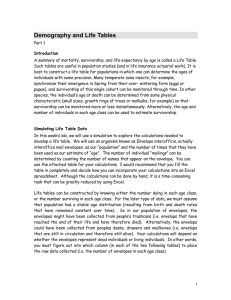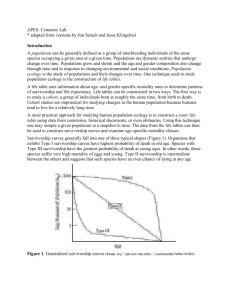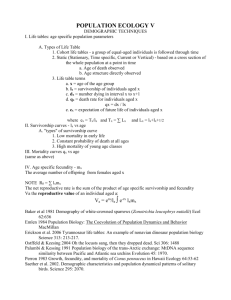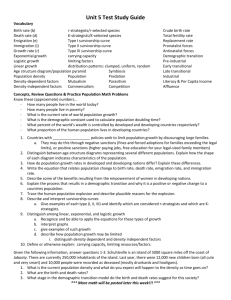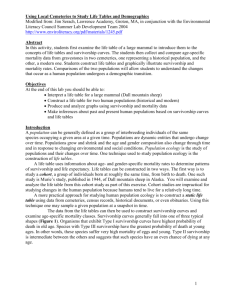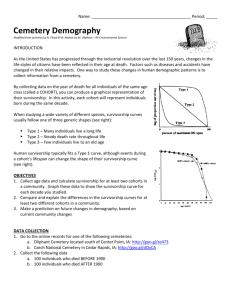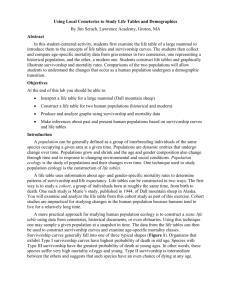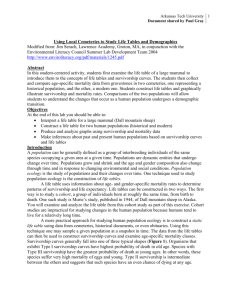Life Tables
advertisement
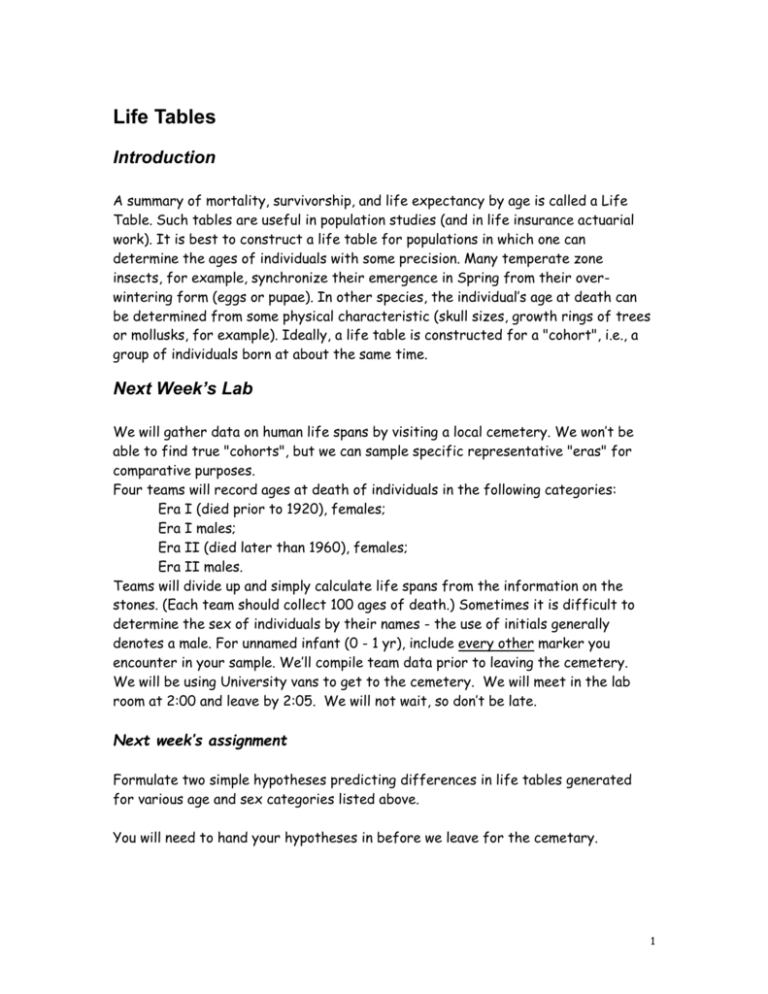
Life Tables Introduction A summary of mortality, survivorship, and life expectancy by age is called a Life Table. Such tables are useful in population studies (and in life insurance actuarial work). It is best to construct a life table for populations in which one can determine the ages of individuals with some precision. Many temperate zone insects, for example, synchronize their emergence in Spring from their overwintering form (eggs or pupae). In other species, the individual’s age at death can be determined from some physical characteristic (skull sizes, growth rings of trees or mollusks, for example). Ideally, a life table is constructed for a "cohort", i.e., a group of individuals born at about the same time. Next Week’s Lab We will gather data on human life spans by visiting a local cemetery. We won’t be able to find true "cohorts", but we can sample specific representative "eras" for comparative purposes. Four teams will record ages at death of individuals in the following categories: Era I (died prior to 1920), females; Era I males; Era II (died later than 1960), females; Era II males. Teams will divide up and simply calculate life spans from the information on the stones. (Each team should collect 100 ages of death.) Sometimes it is difficult to determine the sex of individuals by their names - the use of initials generally denotes a male. For unnamed infant (0 - 1 yr), include every other marker you encounter in your sample. We’ll compile team data prior to leaving the cemetery. We will be using University vans to get to the cemetery. We will meet in the lab room at 2:00 and leave by 2:05. We will not wait, so don’t be late. Next week’s assignment Formulate two simple hypotheses predicting differences in life tables generated for various age and sex categories listed above. You will need to hand your hypotheses in before we leave for the cemetary. 1 Simulating Life Table Data In this week’s lab, we will use a simulation to explore the calculations needed to develop a life table. We will use interoffice mail envelopes as our “population” and the number of times that they have been used as our estimate of “age”. The number of individual “mailings” can be determined by counting the number of addresses that appear on the envelope. You can use the attached table for your calculations. I would recommend that you fill the table in completely and decide how you can incorporate your calculations into an Excel spreadsheet. Although the calculations can be done by hand, it is a time-consuming task that can be greatly reduced by using Excel. The terms that appear in the table are defined below. x = the age intervals (in yr) nx = survivors at the beginning of interval x dx = number that died in interval x mx = mortality rate 1000mx = age-specific mortality rate per 1,000 individuals lx = survivorship ex = future life expectancy for individuals reaching age x. The calculations for each of the terms are as follows: nx = nx-1 - dx-1 dx = nx - nx+1 mx = dx / nx 1000mx –self explanatory lx = nx / n0 Lx = (nx + nx+1)/2 Tx = Σ (Lx, Lx+1,….Lx+n) ex = Tx/nx 2 Interval 0-3 4-6 7-9 10-12 13-15 16-18 19-21 22-24 25-27 28-30 >30 x 1 2 3 4 5 6 7 8 9 10 11 nx dx mx 1000mx lx Lx Tx ex To facilitate your initial data gathering, use the table below. Number of signatures 0-3 4-6 7-9 10-12 13-15 16-18 19-21 22-24 25-27 28-30 >30 Number of envelopes Use the figure on the next page to plot your survivorship. How would you describe the survivorship curve of mailing envelopes? Is it type I, II, or III? Remember that these curves are usually displayed on a log scale. What other questions can you ask and answer about mailing envelopes given the information you generated? 3 Envelope Survivorship 1000 Number Surviving 100 10 1 1 2 3 4 5 6 7 8 9 10 11 Age Interval 4


